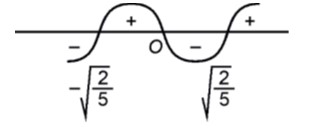Differential Equations
Get insights from 323 questions on Differential Equations, answered by students, alumni, and experts. You may also ask and answer any question you like about Differential Equations
Follow Ask QuestionQuestions
Discussions
Active Users
Followers
New answer posted
a month agoContributor-Level 10
IF =
So, y(1 + cos2 x) =
y(1 + cos2 x) = – cos x + c
y(0) = 0
0 = – 1 + c
-> c = 1
Now,
New answer posted
a month agoContributor-Level 10
5f(x) + 4f = x2 – 4 .(1)
Replace x by
5f + 4f(x) = – 4 .(2)
5 * equation (1) – 4 * equation (2)
y = 5x4 – 4 – 4x2
y = 20x3 – 8x > 0
4x(5x2 – 2) > 0

New answer posted
a month agoContributor-Level 10
(t + 1)dx = (2x + (t + 1)3)dt
I.F.
Solution is
x = (t + c) (t + 1)2
x (0) = 2 then c = 2
x = (t + 2) (t + 1)2
x (1) = 12
New answer posted
2 months agoContributor-Level 10
Let the equation of normal is Y – y = -
where m is slope of tangent to the given curve then
It passes through (a, b) so b – y =
->(a – x) dx = (y – b) dy
On integration
(ii) passes through (3, -3) & then
3a – 3b – c = 9 .(ii)
& 4a - - c = 12 .(iii)
also given
Solve (ii), (iii) & (iv) b = 0, a = 3
Hence a2 + b2 + ab = 9
New answer posted
2 months agoContributor-Level 10
Given
OR
-> Since curve intersect x + 2y = 4 at x = -2 then y = 3 so
From (ii)
put x = 3, then
Related Tags
Taking an Exam? Selecting a College?
Get authentic answers from experts, students and alumni that you won't find anywhere else
Sign Up on ShikshaOn Shiksha, get access to
- 65k Colleges
- 1.2k Exams
- 679k Reviews
- 1800k Answers
